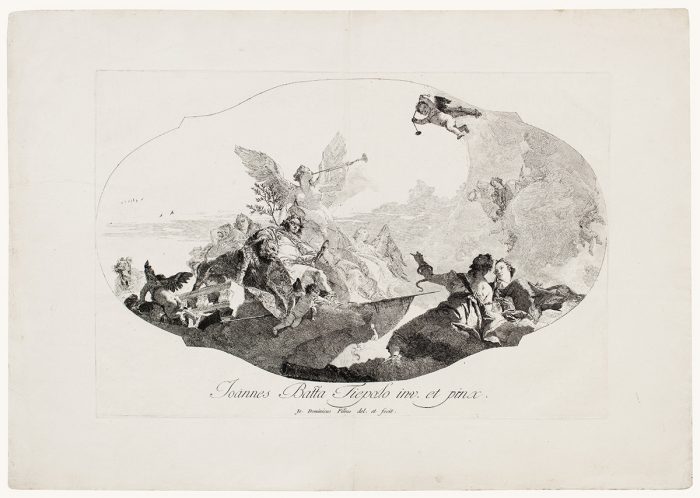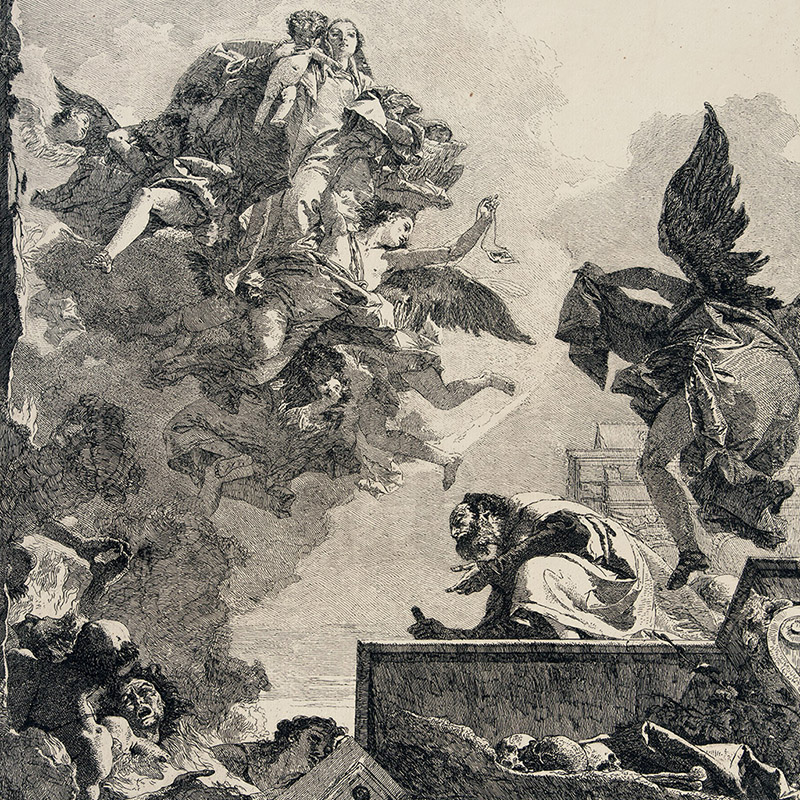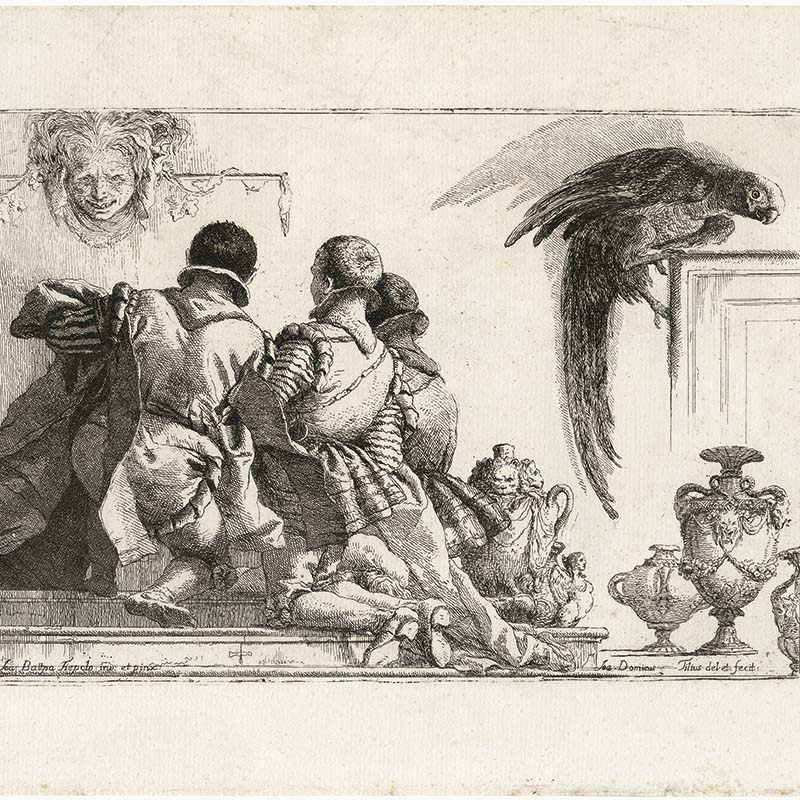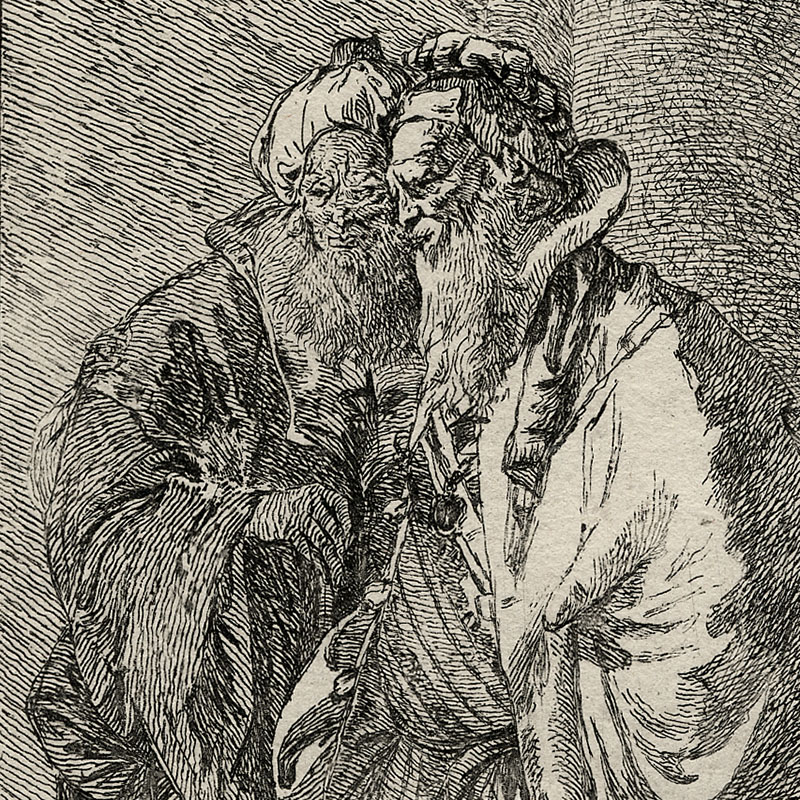Giovanni Domenico Tiepolo
Venice 1727 - 1804
1749/1750
368 x 549 mm
Rizzi, 1971, p. 252, no.113 I/II
Inscribed in the plate at bottom center: Joannes Batta Tiepolo inv. et pinxit. / Jo. Dominicus Filius del. et fecit.
A very fine, brilliant impression, with velvety effects in the darker areas, in the first state of two, before the addition of the number 37 upper left, added in the edition of 1776.
In fine condition with uncut margins, trace of a vertical fold at center, visible manly on the verso, unobtrusive on the recto.
Domenico made this etching from his father’s painting, formerly at the Palazzo Barbaro in Venice and now at the Metropolitan Museum of Art. This is the largest painting by Giovanni Battista, his son Domenico translates this subject in an imposing etching with impressive and sensuous figures. Printed on XVIII century Venetian paper with watermark: letters S V.
The print is included in the Domenico’s Catalog with the title: Valor, Fama, Prudence and Nobility, but represents the Apotheosis of Francesco Barbaro, as indicated in the Mariette Index: The ceiling depicts the subject of the canvas by Giovanni Battista: Valor and Fama with the trumpet that is painted in the house of N. H. Barbaro. The canvas, which was on the spot until 1780, is now kept at the Metropolitan Museum in New York, (see Pallucchini, L’ opera completa di Giambattista Tiepolo, 1968, n.190).
Reference:
Aldo Rizzi, L’opera grafica dei Tiepolo, Le acqueforti, 1971
Information on the master
Domenico was born in Venice, studied under his father, and by the age of 13 was the elder Tiepolo's chief assistant. By the age of 20, he was producing his own work for commissioners. He assisted his father in Würzburg, decorating the famous stairwell fresco, in Vicenza at the Villa Valmarana in 1757, and in Madrid at the palace of Charles III.
His painting style developed after the death of his father in 1770, at which time he returned to Venice, and worked there as well as in Genoa and Padua. His painting, though keeping the decorative influence of his father, moved from its spatial fancy and began to take a more realistic direction. His portraits and scenes of life in Venice are characterized by movement, colour, and considered composition.
Many of Domenico's works are drawings, and as his father, he was a fine draftsman and a competent etcher. He produced 104 sketches of Punchinello, the standard character of the commedia dell'arte, a physically deformed clown. These were created as Entertainments for the Children, and attempted to poke fun at the pretensions and behaviour of the viewer.
Other works of the master



